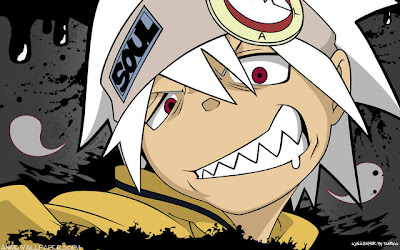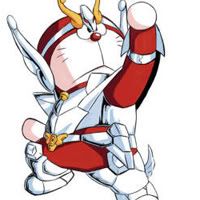
The premise behind Sister Princess is that an ordinary young man (the player) is made to live with twelve lovable little sisters, each with their own distinct quirks and personalities. Both the "little sister" characters and the plot of "being forced to live with beautiful girls" are very common and popular in bishōjo products.
Sister Princess is remarkable for its intensely cute and saccharine atmosphere, taking to an extreme a tendency in Japanese culture. With its focus of young girls, the series can be classified as moe but not technically lolicon since it does not contain pornographic elements.
The game itself plays out like a dating sim. Players have about a month to spend with the sisters with each day broken up into three segments: first is the free time period before noon, followed by the period after lunch and ending with another period of time before bed. During day time, the player can choose which of the girls he wishes to escort to school, if any. The period after lunch is similar to the one in the morning, with additional choices which allow the player to go to various places in town besides walking home with one of the girls. Every night before bed, the player will be allowed to check his e-mail and send replies. As the player continues to interact with the sisters, their reactions to their big brother will change accordingly until the ending.

According to one source, there are two different endings for each sister: the normal ending and the "non-blood relation" ending. As the name would suggest, the special ending reveals that the brother-character and sister aren't actually related by blood. In the case of some of the older sisters, this can lead to the protagonist and "sister" marrying one another.
For Sister Princess 2, the story begins on the final day of school before summer vacation. Then the player chooses a sister who he wants to start with for a close relationship. Therefore, Sister Princess 2 is about spending the player's time with either one sister or all sisters at the same time as they spend their summer together.
In Sister Princess 1, the player can see two different endings for each sister, but Sister Princess 2 has four endings for each sister. The first two were the non-sibling relation and siblings-together ending and, if the player chooses one sister in the beginning but ends up with another sister, either of the other two endings for the first sister who the player does not choose appear ("non-blood relation" ending and "still brother and sister forever" ending also) but with a different story.








 Soul Eater (ソウルイーター Sōru Ītā) is a Japanese manga written and illustrated by Atsushi Okubo. Set at the "Death Weapon Meister Academy," the series revolves around three teams consisting of a weapon meister and (at least one) human weapon. Trying to make the latter a "Death Scythe" and thus fit for use by the academy's headmaster, Shinigami (better known as Death), they must collect the souls of 99 evil humans and one witch, in that order; otherwise, they will have to start all over again. The manga is published by Square Enix and was first released as three separate one-shots serialized in two Gangan Powered special editions and one Gangan Wing issue between June 24 and November 26, 2003. The manga started regular serialization in Square Enix's Monthly Shōnen Gangan manga magazine on May 12, 2004. The first bound volume was released by Square Enix under their Gangan Comics imprint on June 22, 2004 in Japan, and as of March 2011, nineteen volumes have been released. The manga has been licensed for distribution in North America by Yen Press. The English translated version of Soul Eater is serialized in Yen Press' Yen Plus manga anthology magazine starting on July 29, 2008, and the first manga volume was released on October 27, 2009.
Soul Eater (ソウルイーター Sōru Ītā) is a Japanese manga written and illustrated by Atsushi Okubo. Set at the "Death Weapon Meister Academy," the series revolves around three teams consisting of a weapon meister and (at least one) human weapon. Trying to make the latter a "Death Scythe" and thus fit for use by the academy's headmaster, Shinigami (better known as Death), they must collect the souls of 99 evil humans and one witch, in that order; otherwise, they will have to start all over again. The manga is published by Square Enix and was first released as three separate one-shots serialized in two Gangan Powered special editions and one Gangan Wing issue between June 24 and November 26, 2003. The manga started regular serialization in Square Enix's Monthly Shōnen Gangan manga magazine on May 12, 2004. The first bound volume was released by Square Enix under their Gangan Comics imprint on June 22, 2004 in Japan, and as of March 2011, nineteen volumes have been released. The manga has been licensed for distribution in North America by Yen Press. The English translated version of Soul Eater is serialized in Yen Press' Yen Plus manga anthology magazine starting on July 29, 2008, and the first manga volume was released on October 27, 2009. A single drama CD was produced on August 31, 2005 which came bundled with an art book. An anime adaptation produced by Bones first aired on TV Tokyo in Japan on April 7, 2008, and contained 51 episodes; Funimation licensed the anime series for North American distribution. An action-adventure video game by Square Enix for the Wii was released in September 2008, and an action video game for the Nintendo DS was released in October 2008. Another action game was released in January 2009 on the PlayStation 2 and PlayStation Portable. Another manga series which will run alongside the main series, titled Soul Eater Not!, began serialization in Monthly Shōnen Gangan on January 12, 2011.
A single drama CD was produced on August 31, 2005 which came bundled with an art book. An anime adaptation produced by Bones first aired on TV Tokyo in Japan on April 7, 2008, and contained 51 episodes; Funimation licensed the anime series for North American distribution. An action-adventure video game by Square Enix for the Wii was released in September 2008, and an action video game for the Nintendo DS was released in October 2008. Another action game was released in January 2009 on the PlayStation 2 and PlayStation Portable. Another manga series which will run alongside the main series, titled Soul Eater Not!, began serialization in Monthly Shōnen Gangan on January 12, 2011.



























































